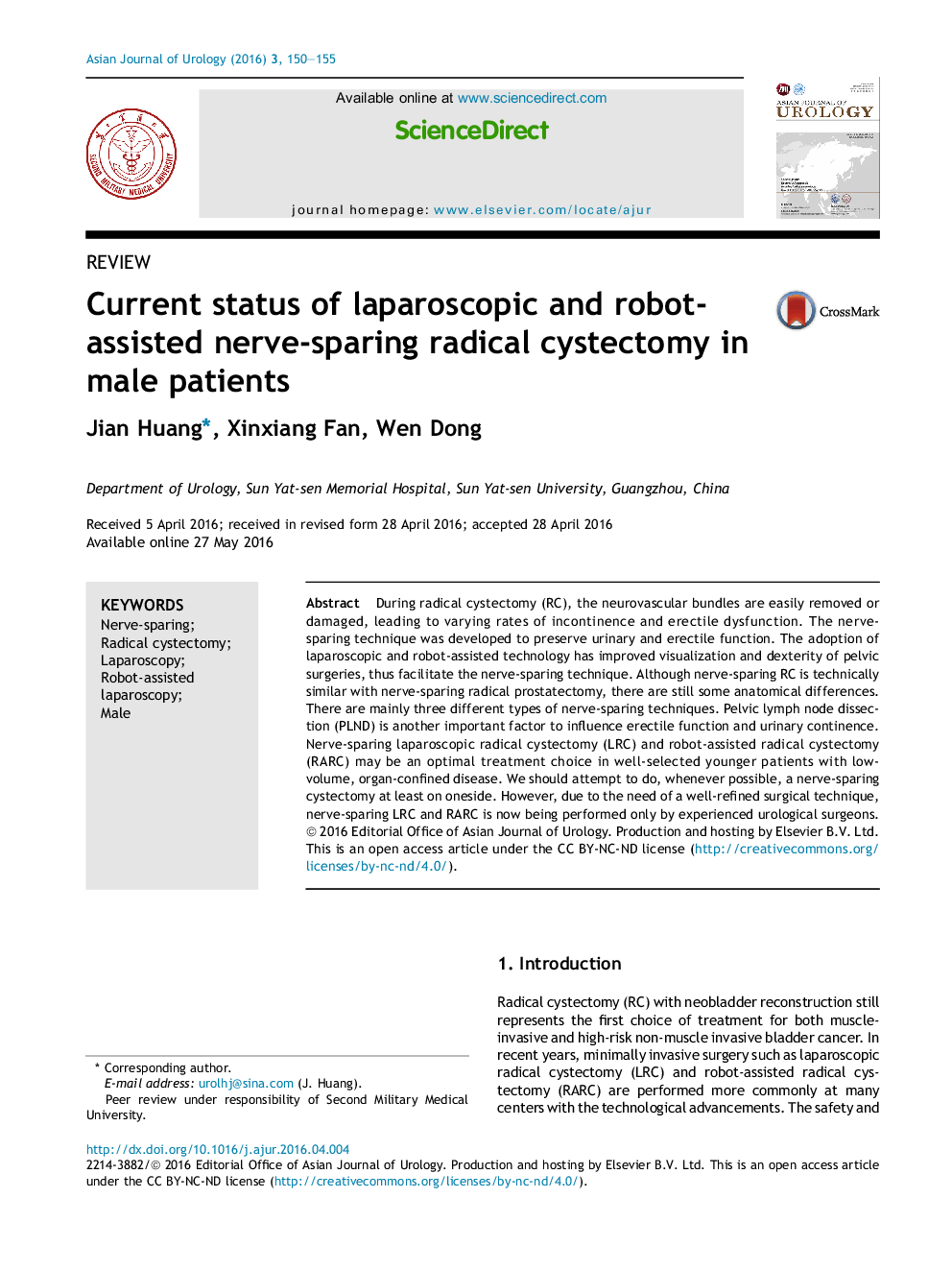| Article ID | Journal | Published Year | Pages | File Type |
|---|---|---|---|---|
| 3852820 | Asian Journal of Urology | 2016 | 6 Pages |
During radical cystectomy (RC), the neurovascular bundles are easily removed or damaged, leading to varying rates of incontinence and erectile dysfunction. The nerve-sparing technique was developed to preserve urinary and erectile function. The adoption of laparoscopic and robot-assisted technology has improved visualization and dexterity of pelvic surgeries, thus facilitate the nerve-sparing technique. Although nerve-sparing RC is technically similar with nerve-sparing radical prostatectomy, there are still some anatomical differences. There are mainly three different types of nerve-sparing techniques. Pelvic lymph node dissection (PLND) is another important factor to influence erectile function and urinary continence. Nerve-sparing laparoscopic radical cystectomy (LRC) and robot-assisted radical cystectomy (RARC) may be an optimal treatment choice in well-selected younger patients with low-volume, organ-confined disease. We should attempt to do, whenever possible, a nerve-sparing cystectomy at least on oneside. However, due to the need of a well-refined surgical technique, nerve-sparing LRC and RARC is now being performed only by experienced urological surgeons.
